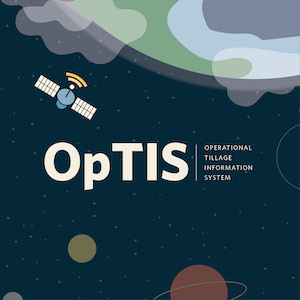DNDC WEBINAR ON CTIC's WEBSITE
|
A recorded one-hour webinar on using CTIC data to analyze trends in conservation farming practices across the Corn Belt is available on CTIC's website. The video, recorded as a live webinar last October, includes a discussion of the use of Operational Tillage Information System (OpTIS) data through the De-Nitrification/De-Composition (DNDC) model, as well as presentations by three users of the data:
|
|
 |
Bill Salas of Regrow (formerly Dagan, Inc.), a primary developer of DNDC, is also featured in the webinar, describing the model and its uses.
|
|
DNDC is a process-based model that predicts emissions of carbon dioxide, methane, ammonia, and nitrous oxide from soil systems under various management regimes. The model also estimates changes in soil organic carbon resulting from management changes. Combined with 14 years of satellite data (2005-2018) from OpTIS, DNDC provides deep insight into the environmental effects of conservation tillage and cover crops.
CTIC's website features easy-to-use visualization tools for both OpTIS and DNDC data. The tools can be used by a wide range of interested people, including:
"With 14 years' worth of data reported at the watershed HUC-8 or crop reporting district scale, OpTIS provides insight into snapshots or trends of soil health practices across the Corn Belt," notes Dave Gustafson, OpTIS project director for CTIC. "Running these data through DNDC adds a very exciting tool for understanding the effects of those practices on key metrics such as soil carbon, and using the visualization tools on our website really brings it all to life."
View the DNDC webinar here on CTIC's website.
|
|

